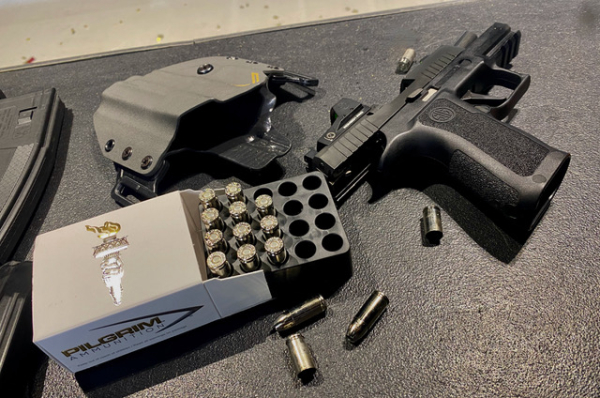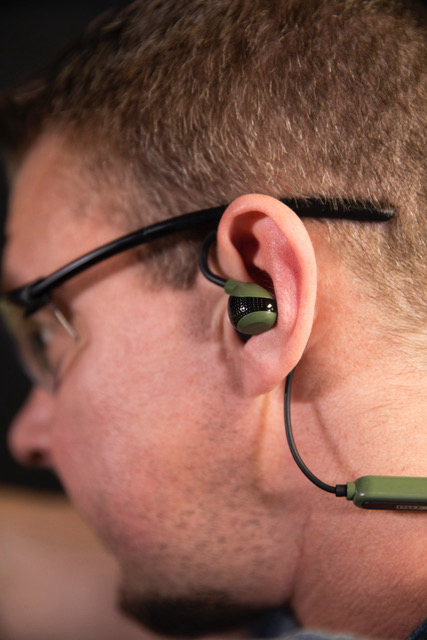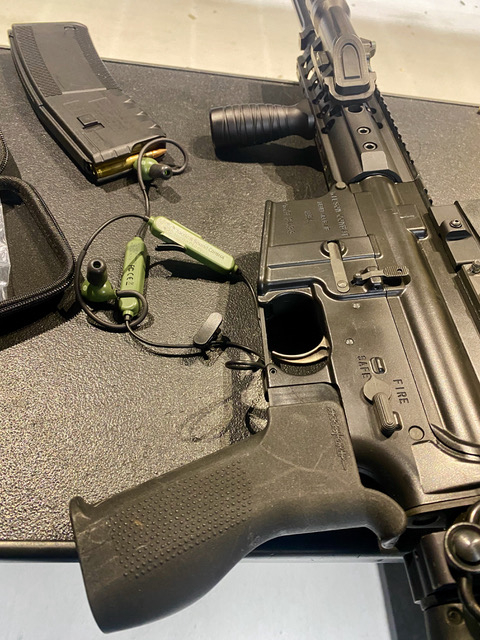I’ve been spending a considerable amount of time at my range/gun shop this week. And the shoppers I’m seeing in the gun shop have changed - a lot.
They’re younger, more discerning, and don’t buy guns they don’t plan to shoot or accessories they won’t be using.
In fact, when they buy accessories, they bring in their cased gun (smart rule for any gun shop) select their accessories, then take them to a “fitting room” off the showroom floor. Once they’re in there, they can take the gun out, have it safety checked, then try the accessory on their gun.
It’s a smart way to let them to see what works versus what they think they’d like.
The staff tells me it’s virtually eliminated returns and buyer’s remorse. After all, they get a “fitting consultation” from the staff and have the opportunity to take the accessory right to the range to start getting familiar with it. Smart moves by all parties in the transaction.
My range has undergone a change of ownership and a refurbishment. Both are changes for the better.
Today, for example, there are enough salespersons to handle crowds (a big change) and still have time to answer customer questions knowledgeably. The former salespeople would let a customer tell them what they wanted, then argue they what they really wanted was the “XYZ model of whatever”.
More than once I watched as a customer simply turned around and walk off.
And the range: markedly better. Better soundproofing, better target systems, terrific air circulation, climate control and - wonder of wonders - enough range officers to make certain the range is always operating safely. Today, they have 12 range officers to handle the members lanes, basic instruction and classroom teaching. And all the instruction is free.
That’s a lot of knowledgeable assistance on hand and a serious commitment to help get new shooters involved in the shooting sports.
Spending time on an indoor range without any undue concerns about the people one either side of you makes for a much productive shooting session.
On Wednesday, I watched FedEx deliver five palettes of ammunition -under the watchful eyes of range staff from the back of the trailer to the inside of the store. More than 200,000 rounds of ammo in various calibers were on those palettes. And 200,000 rounds of any ammunition represents a lot of cash.
But word had already been put out that ammunition would be arriving. I spent a little over an hour on the range, and when I came out, the boxes on those palettes had already shrunk significantly. More than 7,000 rounds of 9mm had already come-and gone, along with hundred of rounds of 12 gauge buckshot, and several thousand round cases of .223 and .308 rifle ammunition.
The time I’ve spent on the range this week has proven shooting is a perishable skill. When your personal guns seem unfamiliar, it’s time to get serious about your practice. The majority of what little shooting I’ve done the past 12 months has been very basic testing of new guns coming to market.
Not this week. It’s been my personal guns, my own ammunition (mostly) and a determination to knock the rust off a skillset that could mean the difference in life and death.
Owning a gun doesn’t mean you’re capable of protecting your family any more than a sports car says you’re a good driver. You need to become familiar with both before trying to use either.
And I know that even on my best days, my guns and my car are capable of more than me. So I practice with both.
This week’s practice sessions also gave me the opportunity to try a couple of new products.
The first, is a new ammunition from Pilgrim. It’s called the Torch, and billed as a new self defense ammunition that “leaves traditional ammunition in the dust.” I’m not sure about that, and hope not to have to test its ability to “eliminate threats in one round”.
But there’s little doubt it’s different. Differences are apparent before you even see the all-silver ammo. Their packaging isn’t camo, black or any sort of tacti-cool pattern, it’s stark white, and the Torch logo on top wouldn’t look out of place on an embossed business card.

It’s also lead-free, California-compliant and sends its 50-grain +P projectile downrange at 2000 feet per second. The speed and weight combination, I’m told, give the knockdown power, and a dynamic fragmentation pattern. Since I didn’t try it in ballistic gel, I’ll take their word for it.
But it delivers on another promise: less perceived recoil.
Don’t know if it’s the weight/speed combination or magic dust, but my SIG P320 definitely moved less with the Torch than any of the other ammo I shot. Less recoil means faster reacquisition of a target- important with defensive ammo or in speed shooting competition.
We’ll test it more later and let you know about penetration and knockdown power.
The second piece of gear, the ISOtunes Sport Advance tactical hearing system, is another of the new high-tech hearing protection products that have made shooting both safer and more comfortable for everyone.


If you have good hearing, the Advance system protects it with “active gunshot noise attenuation”.
If you’re like me and depend on hearing aids to hear anything, they bring the sound amplification I need in order to hear range commands and things going on around me, in addition to sound protection. They also offer Bluetooth connectivity and a noise-cancelling mic that enabled me to carry on a phone conversation from the range.
They don’t offer the same level of sound modeling as my hearing aids, but they cost under $100 (service on my hearing aids run multiples of that).
They’re rechargeable, have auto-shutoff to conserve battery life and generally make your time on the range better. Put them in, adjust the sound level to your liking, and get busy. Everything else is automatic.
One downside I encountered with these is a common one I have with any in-the-ear device. My ears are apparently nothing close to standard sizing. I’ve yet to find a comfortable S,M,L, or XL foam tip that works for me.
Fortunately (for me), the “tips” from a set of my old hearing aids worked fine on the ISOtunes.
The system, in a word, works.
You don’t want to fool around with your hearing. There are lots of options for hearing protection available today -including amplified and non-amplified options. Check them out, find the one you like best, then use them.
It’s Friday, so make plans to get outside this weekend. We’ll be around and, as always, we’ll keep you posted.
— Jim Shepherd